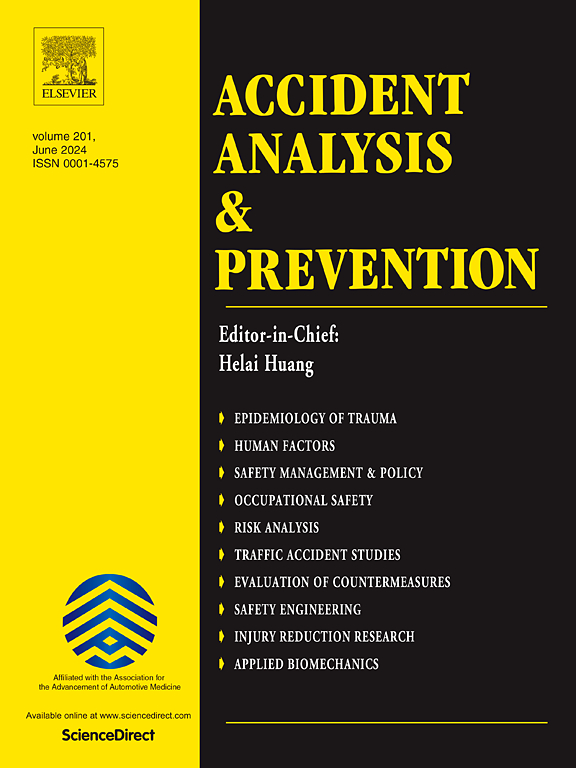Generating risky and realistic scenarios for autonomous vehicle tests involving powered two-wheelers: A novel reinforcement learning framework
IF 5.7
1区 工程技术
Q1 ERGONOMICS
引用次数: 0
Abstract
Emerging technologies have the potential to revolutionize transportation, with Autonomous Vehicles (AVs) enhancing traffic safety, improving efficiency, and reducing emissions by optimizing driving patterns and minimizing idling time. However, despite their great potential, the actual utility and functionality of AVs have yet to be fully realized. Testing remains a critical method for advancing AVs adoption, and given that Powered Two-Wheelers (PTWs) is a major contributor to crashes, this paper proposes a novel scenario generation method for PTWs interactions with AVs. First, we extracted 314 car-to-PTWs crashes from the China In-depth Mobility Safety Study-Traffic Accident (CIMSS-TA) database as the initial state of the test scenarios. Subsequently, Reinforcement Learning (RL) was employed to control PTWs, using a reward function guided by a potential energy function that mirrors human driving characteristics to enhance the risk and realism of the generated scenarios. Finally, the effectiveness and scientific validity of the generated scenarios are verified by comparing and analyzing the risk, realism, and crash severity through multiple indicators. The results demonstrate that our proposed method increases riskiness while maintaining a high level of realism. It is hoped that this process will be applied in the future to not only test AV functions but also encourage AVs to be more mindful of crash severity.
为包括动力两轮车在内的自动驾驶汽车测试生成风险和现实场景:一种新的强化学习框架
新兴技术有可能彻底改变交通运输,自动驾驶汽车(AVs)通过优化驾驶模式和减少空转时间来提高交通安全、提高效率和减少排放。然而,尽管自动驾驶汽车潜力巨大,但其实际用途和功能尚未得到充分实现。测试仍然是推动自动驾驶汽车普及的关键方法,鉴于电动两轮车(PTWs)是造成交通事故的主要原因,本文提出了一种新的PTWs与自动驾驶汽车交互场景生成方法。首先,我们从中国深度移动安全研究-交通事故(CIMSS-TA)数据库中提取了314起车对车碰撞事故作为测试场景的初始状态。随后,采用强化学习(RL)来控制PTWs,使用由反映人类驾驶特征的势能函数引导的奖励函数来增强生成场景的风险和真实感。最后,通过多个指标对比分析风险、真实感和碰撞严重程度,验证生成场景的有效性和科学有效性。结果表明,我们提出的方法在保持高水平真实感的同时增加了风险。希望这一过程在未来不仅能用于测试自动驾驶汽车的功能,还能鼓励自动驾驶汽车更加注意碰撞的严重程度。
本文章由计算机程序翻译,如有差异,请以英文原文为准。
求助全文
约1分钟内获得全文
求助全文
来源期刊

Accident; analysis and prevention
Multiple-
CiteScore
11.90
自引率
16.90%
发文量
264
审稿时长
48 days
期刊介绍:
Accident Analysis & Prevention provides wide coverage of the general areas relating to accidental injury and damage, including the pre-injury and immediate post-injury phases. Published papers deal with medical, legal, economic, educational, behavioral, theoretical or empirical aspects of transportation accidents, as well as with accidents at other sites. Selected topics within the scope of the Journal may include: studies of human, environmental and vehicular factors influencing the occurrence, type and severity of accidents and injury; the design, implementation and evaluation of countermeasures; biomechanics of impact and human tolerance limits to injury; modelling and statistical analysis of accident data; policy, planning and decision-making in safety.
 求助内容:
求助内容: 应助结果提醒方式:
应助结果提醒方式:


